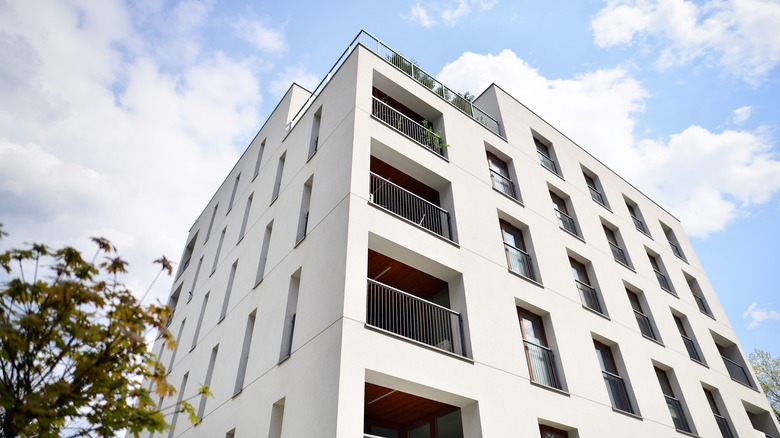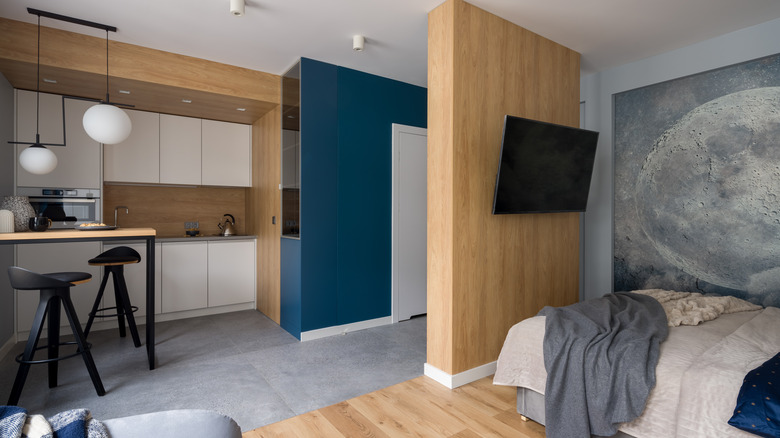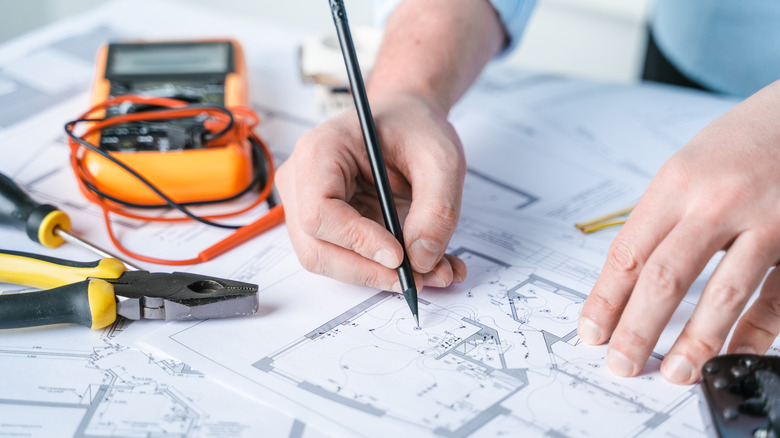What Does It Mean To Have A Convertible Apartment?
Searching for a place to live opens up a world of options, from renting a studio apartment to owning your own home. If you've ever lived in a major city (primarily New York) you may have heard of convertible apartments. If you haven't, maybe you're familiar with flexible apartments, which is another term landlords might use, according to Apartments.com. You may also see the phrase "opportunities to convert" in a listing, but in the end, they all mean the same thing. A convertible apartment is a form of housing somewhere between a studio and a one-bedroom apartment.
It's a great option if you can't afford a one-bedroom, but you know a studio would be way too small. With a studio, you live in a tiny space with an open-floor plan, so you don't have anything separating your bed from the rest of the unit. The point of an apartment being convertible is that you have more square footage to modify into a bedroom (though you could use the space for something else, like a small home office or art studio). Now, let's explore what it really means to have a convertible apartment.
What is the layout of a convertible apartment?
Convertible apartments can have different layouts. You may find them with a sliding door or movable wall that reveals a closed-off space, other apartments have three walls and no door, and in some units, the extra space is basically an alcove to place your bed or desk (depending on your use for the room), says Downtown Apartment Company. If you'd like to add walls or doors, you have the opportunity to do so, which is, ultimately, why realtors call them convertible apartments — you can convert the space to suit your needs.
Before you make any changes to your apartment, you'll need to get special clearance from your landlord, StreetEasy states. Even though you have the option to do so, adding a temporary wall significantly changes the building's Certificate of Occupancy, which drastically affects fire safety measures. If you go ahead with renovations without your landlord's permission, you may not receive back your security deposit, or worse, you might be evicted from the unit. Provided you do get your landlord's approval, it's time to consider your options for a temporary wall.
Temporary wall options
There are a few methods to building a temporary room divider, the first being a pressurized wall. When installed, a pressurized wall pushes against the ceiling and surrounding walls; it is not permanently attached to anything, Brick Underground explains. Therefore, it can be easily removed without damaging the rest of the apartment. A temporary wall can be used in any type of setting, not just convertible apartments. Some homeowners may erect a pressurized wall for a space they know they'll no longer need in the future.
One of the more practical options to convert your apartment space is to create a bookshelf wall. Not only is it more attractive than your average wall, it provides additional storage space. Decorating a bookshelf wall is also an exciting way to showcase your favorite home decor like artwork, framed photographs, figurines, or a collection of antiques. Because of the weight it will be carrying, the biggest difference between the bookshelf and the pressurized wall is that the bookshelf will require some sort of actual attachment to the wall or ceiling (presumably by nail or screw), says Boom. Fortunately, the bookshelf wall will still be easy to remove.


